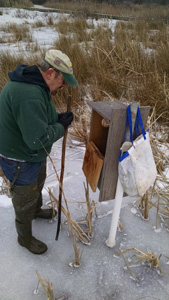Mark Memmott, interviewed by Scott Simon, takes the time to parse out the meanings of the word “suicide,” and explores when the word is (and is not) appropriately applied to someone who takes other lives along with his or her own. Memmott wants to inform, not inflame.
But I should note that the phrase suicide bomber can be problematic, and I want to be very careful with what I say next. I am not suggesting anything about what happened aboard the Germanwings jet, but, especially when information is scant, it’s important to remember that what seems obvious may not be. For instance, there is evidence that some of those who have been called suicide bombers have been forced to or tricked into carrying explosives into buildings and crowds. Should they be called suicide bombers? I don’t think so. I don’t think most people would. And I know I’m a nag on this topic. It’s usually best to avoid labels, and the phrase suicide bomber is a label. Unless you’re sure those labels apply, stick to the facts, be precise with your words, choose them carefully.





 Second, the effort of walking up to the boxes was much easier. Most of the boxes were surrounded by firm ice (see guest photo by Kat). This also meant that we weren’t working over our heads—always a challenge for the more diminutive members of the team. It was only at the edges of open water where the ice would suddenly break through, threatening to tip the unwary monitor into the cold, cold water and mud.
Second, the effort of walking up to the boxes was much easier. Most of the boxes were surrounded by firm ice (see guest photo by Kat). This also meant that we weren’t working over our heads—always a challenge for the more diminutive members of the team. It was only at the edges of open water where the ice would suddenly break through, threatening to tip the unwary monitor into the cold, cold water and mud.